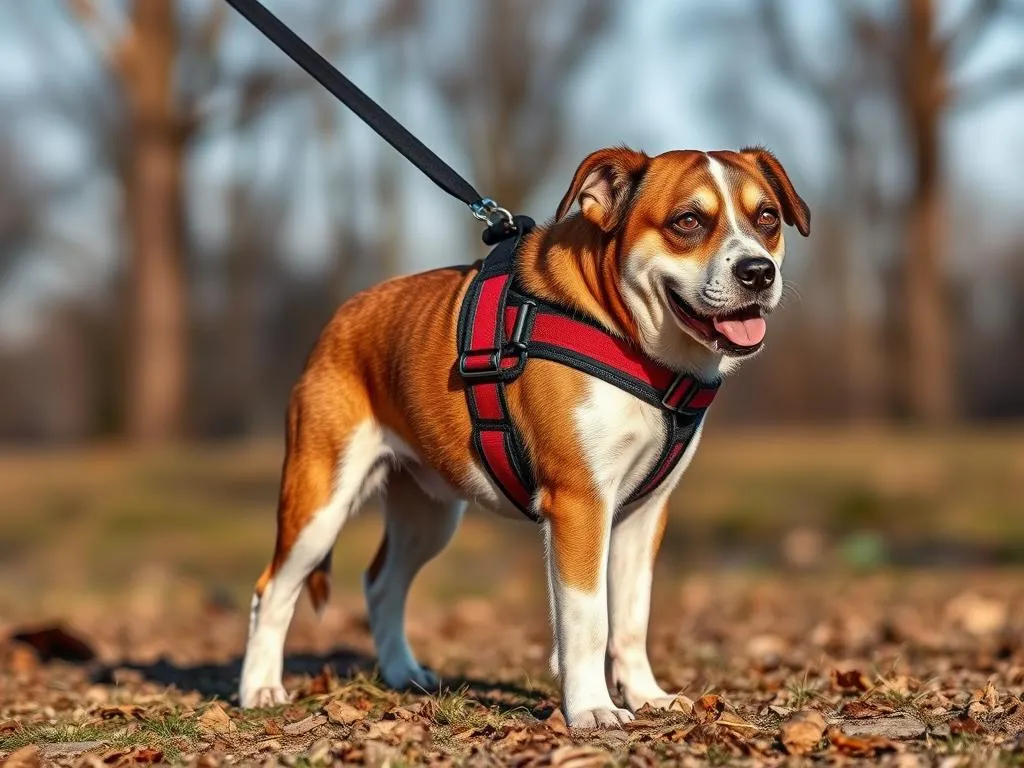
Introduction
Finding the right support for our furry friends is crucial, especially when they face mobility challenges. Dog lift harnesses serve as essential tools for pet owners who wish to help their dogs navigate their daily routines with ease. These harnesses are particularly beneficial for elderly dogs, those recovering from surgery, or any dog dealing with mobility issues.
In this article, we will delve deep into everything you need to know about the best dog lift harnesses, including their definitions, benefits, types, and recommendations. By the end of this post, you’ll be well-equipped to choose the right harness for your dog and learn how to use it effectively.
Understanding Dog Lift Harnesses
What is a Dog Lift Harness?
A dog lift harness is a supportive device designed to aid dogs with limited mobility. It typically consists of straps, handles, and support areas that provide the necessary lift and assistance. The harness can be positioned around the dog’s torso or specific body parts, allowing the owner to help their pet get up, walk, or navigate stairs without putting undue strain on their joints.
Why Use a Dog Lift Harness?
There are numerous reasons to consider a dog lift harness for your canine companion:
- Mobility Aid: These harnesses assist dogs with mobility problems, helping them move more comfortably.
- Post-Surgery Recovery: After surgery, many dogs struggle to regain their strength. A lift harness can provide the necessary support during their recovery.
- Support for Aging Dogs: As dogs age, they may experience arthritis or other health issues. A lift harness can help them maintain their independence while ensuring their safety.
Types of Dog Lift Harnesses
When it comes to choosing a dog lift harness, understanding the different types available can help you make an informed decision. Here are the most common variations:
- Full-Body Harnesses: These harnesses provide support for both the front and rear of the dog, making them ideal for dogs with severe mobility issues.
- Rear Support Harnesses: Focused on lifting the back half of the dog, these harnesses are great for dogs that struggle to stand or walk on their hind legs.
- Front Support Harnesses: Designed to assist dogs that have difficulty using their front legs, these harnesses support the chest and front limbs.
- Combination Harnesses: These versatile options offer support for both the front and rear, making them suitable for a wide range of mobility issues.
Factors to Consider When Choosing a Dog Lift Harness
Size and Fit
When selecting a dog lift harness, the first step is to ensure it fits your dog properly. Measure your dog’s chest and waist to find the right size. An ill-fitting harness can cause discomfort or even injuries.
Material and Durability
Typically made from nylon, polyester, or a combination of both, the material of a lift harness can greatly affect its durability and comfort. Look for options that are both lightweight and robust, as well as those with padded areas for added comfort.
Ease of Use
Consider how easy it is to put the harness on and take it off. Designs with adjustable straps and quick-release buckles are often more convenient for both you and your dog.
Safety Features
Safety should never be compromised. Look for harnesses that include reflective elements for visibility, secure buckles, and padded areas to prevent skin irritation.
Price Range
The cost of dog lift harnesses can vary significantly. Generally, you can find options ranging from affordable to premium. Understand what features are offered at each price point to ensure you’re getting the best value for your investment.
Top Recommendations for the Best Dog Lift Harnesses
Product #1: PetSafe Happy Ride Dog Lift Harness
- Key Features: Adjustable straps, padded support areas, and a sturdy handle.
- Pros: Easy to use, comfortable for dogs, and offers a secure fit.
- Cons: Some users report that it lacks durability over time.
- Price Point: Approximately $39.99.
- Ideal User Scenario: Great for dogs recovering from surgery or those needing occasional support.
Product #2: Kurgo Tru-Fit Smart Harness
- Key Features: Crash-tested, adjustable, and designed for both walking and lifting.
- Pros: Extremely durable and versatile, provides excellent support.
- Cons: Can be slightly challenging to adjust for first-time users.
- Price Point: Approximately $49.99.
- Ideal User Scenario: Perfect for active dogs that require a harness for both lifting and daily walks.
Product #3: Ruffwear Web Master Harness
- Key Features: Five points of adjustment, padded support, and a low-profile handle.
- Pros: High-quality materials and excellent for active dogs.
- Cons: The price may be on the higher side for some pet owners.
- Price Point: Approximately $89.95.
- Ideal User Scenario: Suitable for outdoor adventures and helping dogs navigate challenging terrain.
Product #4: PetFusion Ultimate Dog Lift Harness
- Key Features: Dual support, lightweight design, and padded handles.
- Pros: Offers excellent back support and is easy to use.
- Cons: Limited color options available.
- Price Point: Approximately $59.95.
- Ideal User Scenario: Ideal for senior dogs needing assistance with mobility around the house.
Product #5: Voyager Step-in Air Dog Harness
- Key Features: Breathable mesh fabric, step-in design, and adjustable straps.
- Pros: Comfortable for dogs, lightweight, and easy to put on.
- Cons: Not suitable for larger breeds needing heavy support.
- Price Point: Approximately $29.99.
- Ideal User Scenario: Best for smaller dogs or those with mild mobility issues.
How to Properly Use a Dog Lift Harness
Step-by-Step Guide for Putting on the Harness
- Prepare the Harness: Lay the harness flat to ensure there are no twists or tangles.
- Position Your Dog: Have your dog stand or sit comfortably.
- Step In: If it’s a step-in harness, guide your dog’s front legs through the openings.
- Secure the Straps: Adjust and fasten all straps, ensuring they are snug but not too tight.
- Check the Fit: Ensure that you can fit two fingers between the harness and your dog’s body for comfort.
Best Practices for Assisting Your Dog
- Lift Gently: When lifting your dog, use the harness handles to provide support without pulling too hard.
- Watch for Signs of Discomfort: Pay attention to your dog’s reactions. If they seem uncomfortable, reassess the fit and adjust as necessary.
- Practice Patience: It may take time for your dog to get used to the harness, so be patient and reassuring.
Troubleshooting Common Issues
If you notice the harness slipping or causing discomfort, consider the following adjustments:
- Reassess the Fit: Make sure the harness is the correct size and properly adjusted.
- Add Padding: If the harness causes chafing, consider adding padding or a layer of clothing underneath.
- Seek Professional Help: Consult a veterinarian or a professional dog trainer if issues persist.
Real-life Experiences and Testimonials
Case Studies of Dogs Using Lift Harnesses
Many dogs have benefited from the use of dog lift harnesses. For example, Daisy, a 12-year-old Labrador, struggled with arthritis. After her owner invested in a rear support harness, Daisy regained the ability to enjoy her daily walks. Her owner noted a significant improvement in Daisy’s overall mood and energy levels.
Owner Testimonials
One pet owner shared, “After my dog’s surgery, I was worried about how to help him get around. The lift harness made all the difference. He felt supported, and I felt more confident helping him.” Such testimonials highlight the emotional and physical benefits of using a lift harness.
Conclusion
Finding the best dog lift harness for your furry friend can significantly enhance their quality of life, especially if they are dealing with mobility challenges. It’s essential to consider your dog’s specific needs, the harness’s features, and how to use it correctly. By doing so, you can ensure that your dog remains comfortable and secure while receiving the support they need.
Investing in a quality dog lift harness not only aids in mobility but also strengthens the bond between you and your dog, providing both of you with peace of mind. Whether you are preparing for recovery after surgery or assisting an aging pet, the right harness can make all the difference.









